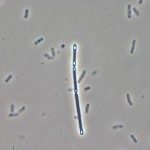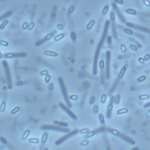Link to Pubmed [PMID] – 10217795
J. Bacteriol. 1999 May;181(9):2966-9
Carbon catabolite repression (CCR) of Bacillus subtilis catabolic genes is mediated by CcpA and in part by P-Ser-HPr. For certain operons, Crh, an HPr-like protein, is also implicated in CCR. In this study we demonstrated that in ptsH1 crh1 and hprK mutants, expression of the lev operon was completely relieved from CCR and that both P-Ser-HPr and P-Ser-Crh stimulated the binding of CcpA to the cre sequence of the lev operon.

